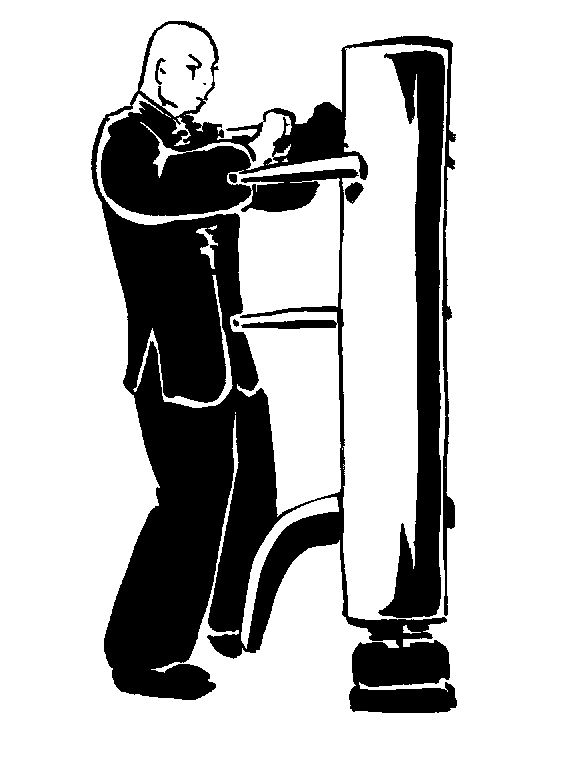
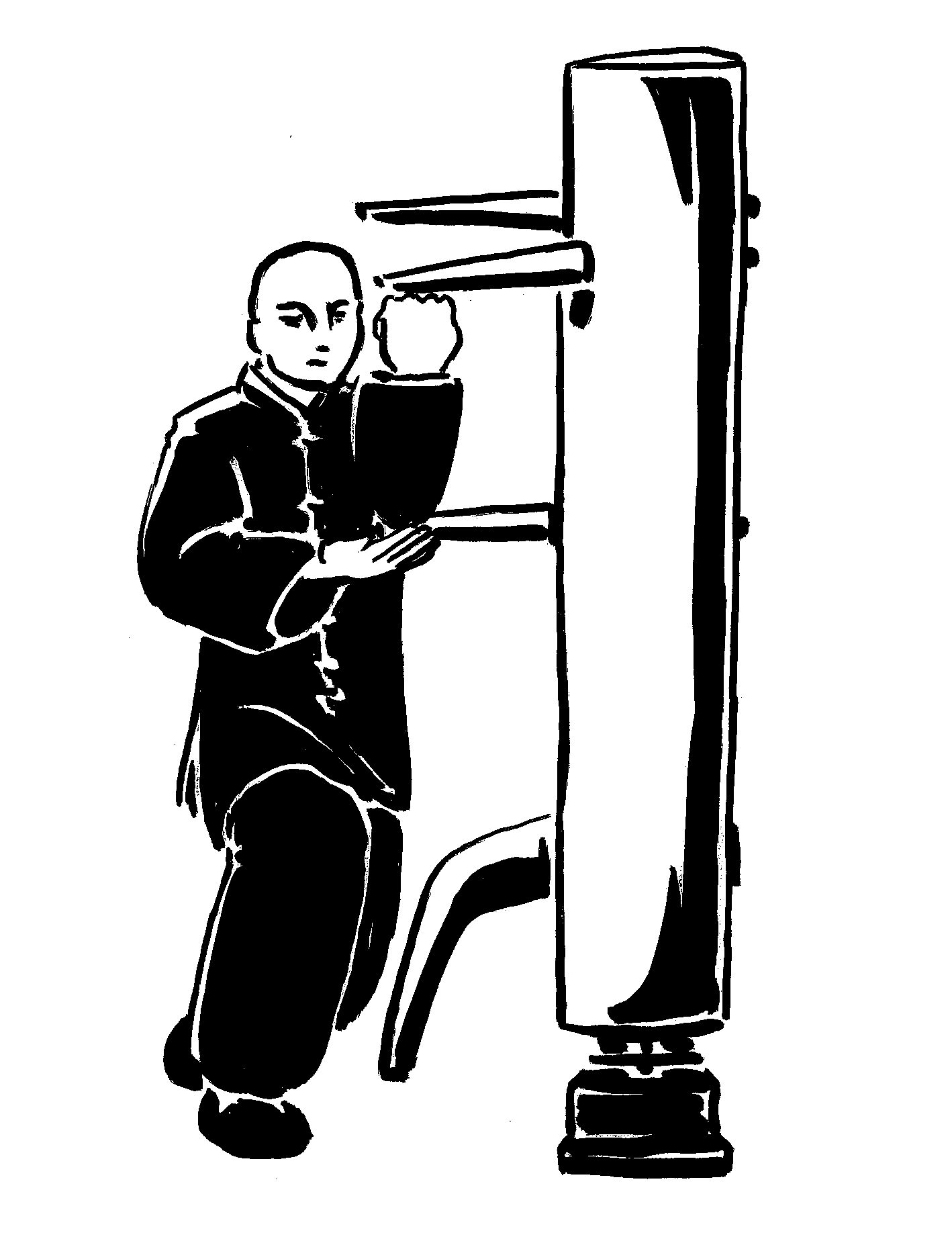
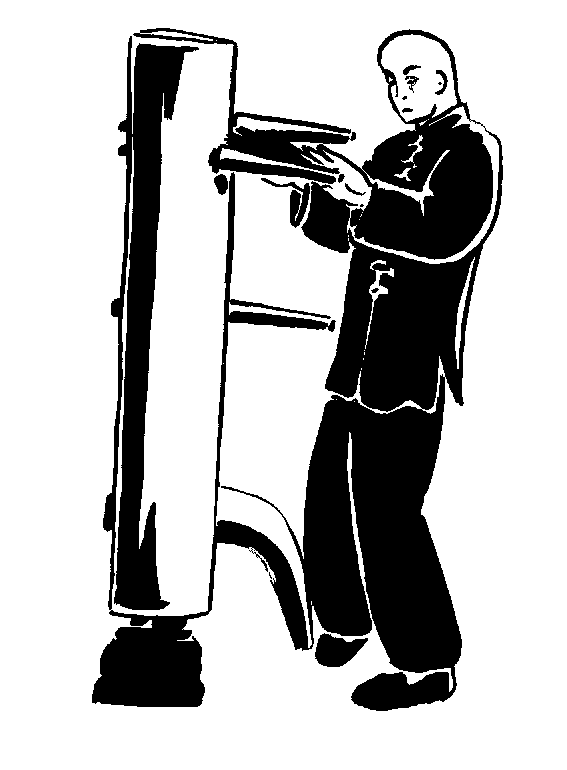
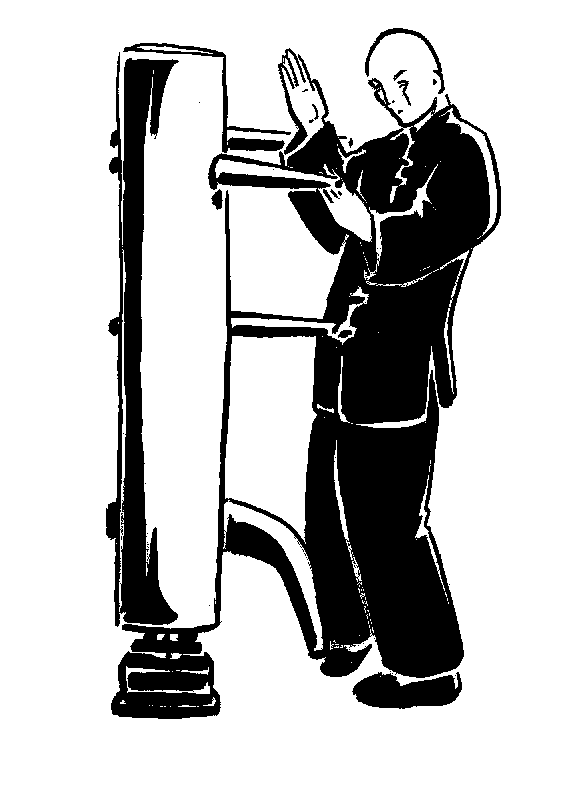
|
Vinh Xuan is the Vietnamese school of Wing Chun; this name come from Yim Wing Chun (bright spring), the first pupil of the monk Ng Mui, who, according to the legend, created this style inspired by the fighting between a crane and a snake. |
Around the half of XVII century the monastery of Shaolin was disrupted by a fire and, according to the legend, only a few monks survived, persecuted as opponent of Manciù. Among the survivors there was a woman, the monk Ngu Mai (Ngu Mui), who, to defense from the betrayed monks, decided to elaborate a kind of fighting in short distance, to oppose the Shaolin style. Observing the fight between a crane and a snake, Ngu Mai understood that the applications of movements of the wing of the crane, linked to the fluidity of the movements of the snake, allowed to develop the fittest style to fight in short distance. So she create a style that stood out the short and high positions and the fighting in short distance, contrary to the short and static positions and to the fighting in long distance characteristics of Shaolin.
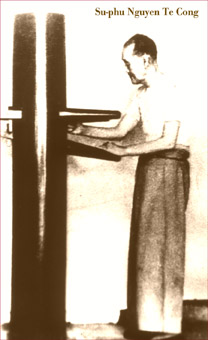
|
Vietnamese Vinh Xuan school takes its origin from
the chinese master Luong Vu Te (Yuen Chai-Wan).
|
M° Luong Vu Te (Yuen Chai-Wan) was military adviser of China during the sino-japanese war, wanted by the secret Japanese service; in 1940 he took shelter in North Vietnam, with the name of Nguyen Te Cong, to hide his real identity.
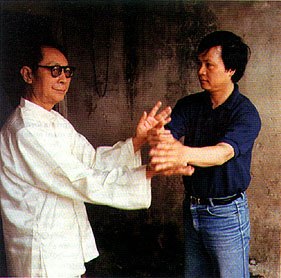
|
In Hanoi M° Nguyen Te Cong founded an important school in which were admitted only Chinese pupils: the only Vietnamese pupil was M° Ngo Si Qui († 1997), who transmitted the style of Vinh Xuan to M° Tran Ngoc Dinh (the two masters togetehre in the picture). After 1954, with the separation of the country in North and South Vietnam, the founder Master of Vinh Xuan moved to Saigon (Ho Chi Minh City), where he went on with his teaching until his death, in 1963, when he was 93 years old. |
Dopo il 1954, con la divisione del paese in Nord e Sud Vietnam, il Maestro Fondatore del Vinh Xuan si trasferì a Saigon (Ho Chi Minh City), dove continuò la sua opera di insegnamento fino alla morte, avvenuta nel 1963 all'età di 93 anni.
In the practice of Vinh Xuan the preliminary work is the "free" of the articulations of the body (wrist, elbow, shoulder and so on) from rigidity, so to develop the sensibility characteristic of this style, that allow to react to the external stimulus. In a second time the practicing studies the techniques of ward off and attack, learned through the study of the quyen (forms). But the system of training in couple characteristic of Vinh Xuan is the Tam Kieu (in Chinese "chi sau", sticked hand), which allows the practicing to develop the sensibility to perceive the direction, the intensity and the kind of force used by the enemy in the attack.
The program of Vinh Xuan distinguish from that of other schools of Wing Chun: it consist of nine quyen (forms) with open hand, among which there is one on the wooden man (Moc Nhan Trang). Some of these forms are inspired to the movement of animals, like Bao Quyen (leopard) or Xa Quyen (snake), others are quyen of breathing, like Ngu Hinh Khi Cong (breathing of the five animals). Regarding the weapons, more than butterfly-knife (Bat Tram Dao), in Vinh Xuan are used the right sward with double cut (Kiem) and the stick high like a man (Te Mi Con).